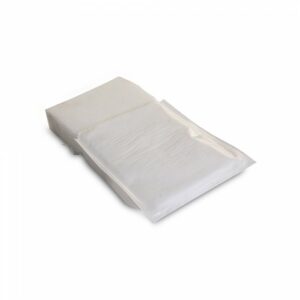Pharma transport requires specialized treatment. For instance, it is important that your medication is sent from A to B in a temperature-controlled environment. The medication’s effectiveness is negatively affected if it is incorrectly stored and transported after it has been manufactured. Therefore, the right shipping conditions must be guaranteed at all times during the shipment process.
The temperature of the shipment is of great importance: not only because of the complex composition of the medicines, but also because medicines are often transported internationally for long distances. Pharmaceutical transport is global and the requirements are becoming increasingly stringent. In order to guarantee the quality of transported medicine, the Good Distribution Practices Guidelines have been established for wholesalers and manufacturers of human medicine in the Netherlands.
What are Good Distribution Practices?
The Good Distribution Practices (GDP) is the aspect of quality assurance that ensures that the quality of medicine is maintained through all stages of the distribution chain. Increasingly complex drugs are being developed that are even more sensitive to temperature changes, making the requirements for drug transport more strict.
Two of the most important topics of the GDP standards are therefore the temperature conditions;
“If cooling elements are used in insulated boxes, they must be positioned so that the product does not come into direct contact with the cooling element. Staff shall be trained on the procedures for assembling the insulated boxes (seasonal composition) and on the re-use of the cooling elements. (Guidelines of 7 March 2013 on good distribution practices for medicinal products for human use)
“For temperature-sensitive products, appropriate equipment (e.g. thermal packaging and containers or temperature-controlled vehicles) shall be used to ensure that proper transport conditions are maintained between the manufacturer, the wholesaler and the customer. (Guidelines of 7 March 2013 on good distribution practices for medicinal products for human use)
and temperature monitoring;
“On the basis of mapping, temperature monitoring equipment should be placed so as to ensure that the monitoring equipment is located where the greatest fluctuations occur. (Guidelines of 7 March 2013 on good distribution practices for medicinal products for human use)
To whom do the GDP guidelines apply?
The GDP guidelines have been drawn up for wholesalers and manufacturers of medication for human use. The Healthcare Inspectorate inspects for compliance with the GDP and issues certificates if the site meets these requirements.
However, it is important that everyone in the chain, not just the pharmaceutical companies, guarantees the quality of the medication. For example, hospital pharmacists and community pharmacists have drawn up their own professional standards. These set requirements for the storage and transport of medicines.
Solutions for GDP transport
Do you want to transport GDP yourself? By using our special products we can make a custom solution for every transport challenge within medicine transport. For example, De Ridder Packaging has developed a special insulation envelope, so that the pharmaceuticals will never come into contact with the cooling element during transport. We also offer special dimensions of EPS boxes, so that even the smallest shipment can be conditioned.
We have also noticed that there is an increasing demand for Phase Change Materials (PCM) to keep the medicines at the right temperature. The PCM cooling elements freeze or melt near the protection temperature of the drug, leading to more effective and improved protection. The range for the PCM’s is between -21°C and +21°C. Temperatures are achieved by means of salts, glycols, and paraffin. We can determine the right temperature and gel in consultation with you.
For the transport of medicines, a sponge pack is primarily chosen. It is available with bubble wrap on the top to protect vulnerable medication. It can also be filled with PCM for extra protection. These are designed for reliable protection, to keep your medicines at the right temperature during transport. The sponge pack is vacuum packed. This gives it a consistent weight and will never change shape during freezing and thawing.
Wholesale pharmaceuticals
At a wholesaler of pharmaceuticals, the drugs are repackaged from bulk to packages. These are then sent to hospitals and pharmacies. In order to guarantee the quality of these shipments, we offer both gel packs and EPS boxes.
The gel packs are made of high-quality materials. Because we have our own modern machinery, it is also possible to determine the thickness of the gel. This enables us to develop the best gel pack for each transport challenge.
Because the gel pack is essential in this process, we can offer a safety stock. If the distance permits, it is even possible to deliver the gel packs frozen in combination with a cold store. In these situations, we advise you to use crates instead of boxes in which the gel packs will be packed. This is more efficient (faster freezing time) and cheaper (no box component in the price).
Pharma transport for pharmacies
This concerns, in particular, the last part of the distribution chain: the transport of pharmaceuticals from the pharmacy to the patient. In this case, drugs are often not sent in the correct way. We offer special products for this, such as small gel packs, smaller EPS boxes, absorption mats, and isolation envelopes.
In addition, we also have NFC temperature loggers, so that you always know the temperature of the shipment. In this way, the temperature can be monitored. We also offer labels, such as security and warning labels.
Advice
Would you like to know which chilled solution best suits your situation? Please contact the Ridder Packaging directly for personal advice. One of our experts is always available to provide you with a tailor-made solution.

